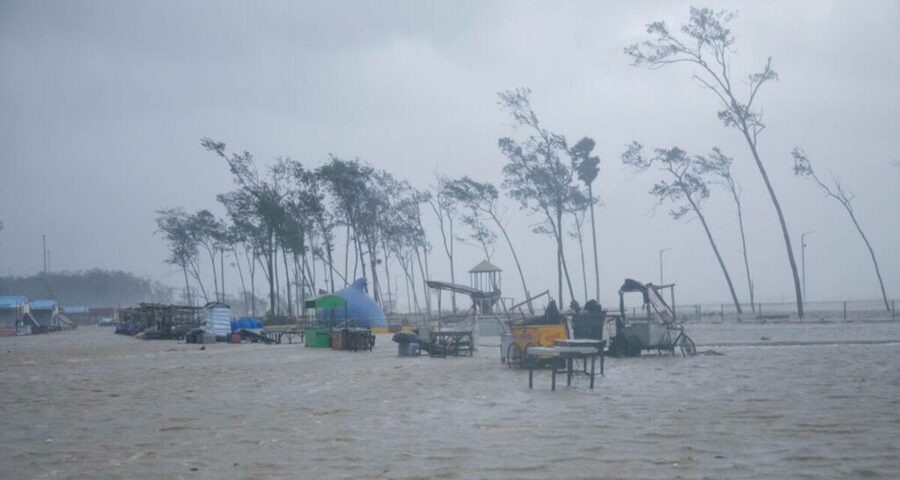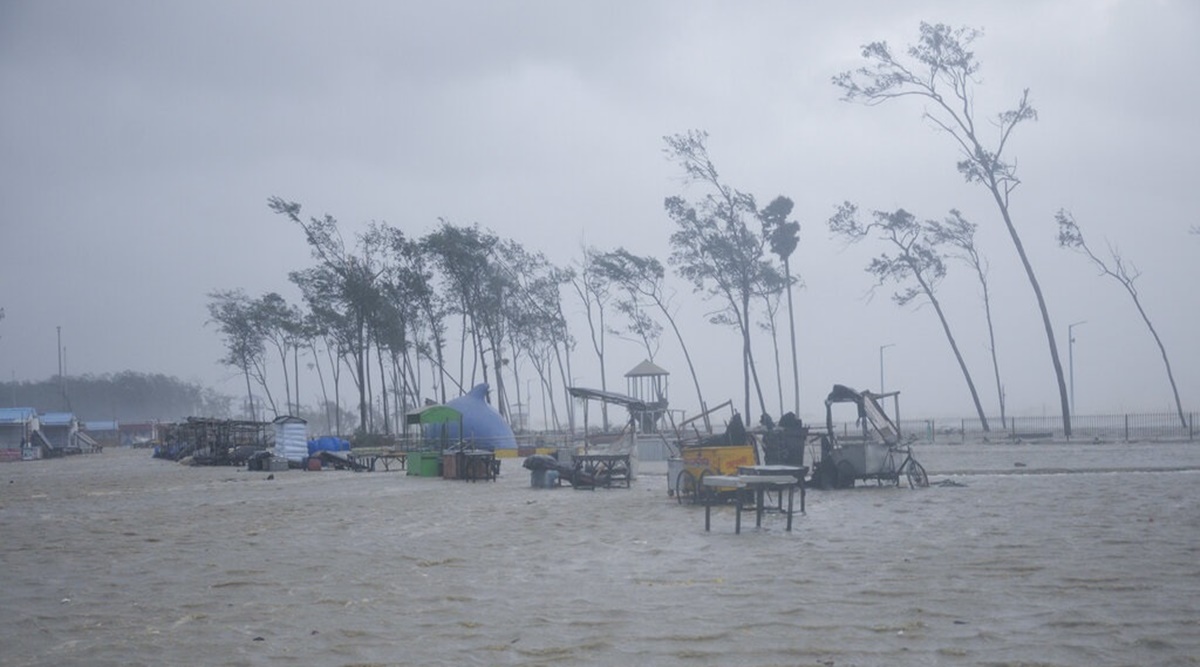Cyclones along the Western and Eastern coasts amidst the pandemic alert us to the need for year-long preparedness, approaching a multi-disciplinary approach to averting disasters, reducing vulnerabilities.
Within a span of a week, first the Western Coast (Gujarat in particular) and then the eastern coast (Odisha and West Bengal) were battered with cyclones —Tauktae in the west and Yaas in the east. While cyclones and storms are not unusual on the Eastern coast (we have witnessed Aila, Bulbul, Amphan in the past), what was unique this time was that an environmental hazard happened in the middle of another mega hazard – the Covid-19 pandemic. Moreover, while the Yaas cyclone caused immediate damage, the flooding it induced took the adversity to a different scale altogether.
We need to take cognisance of the fact that such overlapping hazards could be a recurrent phenomenon. Accordingly, the disaster risk reduction activities need to be geared towards first an interdisciplinary diagnosis of various risk drivers. This then needs to be followed by a sequence of interventions spread round-the-year — not a knee-jerk ex-post set of actions – with a focus on building resilience at the individual and community level.
History – up to as recently as last year – shows that millions of hectares over the Ganga-Brahmaputra flood plains and the delta have been subjected to riverine and flash floods on clockwork regularity. Further, the densely populated riverine areas, the sand bars that dot the river channels, and the deltas are continuously subjected to river bank erosion. Often these two phenomena coincide in the flood months. This year, with Covid already rampaging the countryside, the future looks ominous. Though already late, the ongoing adversities resulting from the Yaas cyclone and Yaas-induced flooding amidst the pandemic, need to be seen as early warning signals on the challenge that stares at our face.
Any sustained change in reducing disaster risk would require a clinical understanding of the risk drivers. In disaster parlance, the risk is defined as a product of hazard and vulnerability. When overlapping hazards take place, with each hazard having their own character, the final shape of the hazard is often a product of these individual characters. In the recent case of Yaas and the flooding induced by it, the former was a single event, with high magnitude, spread over a limited time duration (few hours), with moderate speed of onset (over days), and high arial and spatial dispersion (multiple districts over the three states of Odisha, West Bengal and Jharkhand). The resultant flooding, in the coastal districts and in the Sunderbans delta, was of moderate magnitude, spread over a much longer duration of time, high frequency with the tidal surges continuing to inundate vast stretches of coastal areas and riverine deltas. So, finally, we have a situation where the overall hazard is much larger than the triggering cyclone.
Vulnerability, or the propensity of loss, is itself an outcome of complicated processes. The proximate causes of vulnerability could be the recurrent exposure to hazards as people continue to live in unsafe conditions — whether on the riverine flood plains, the sinking deltas or the eroding sand bars. However, this understanding of vulnerability often equates it with exposure and biophysical factors. Hence limiting the exposure, either through zoning or planned retreat, becomes an important way of reducing this biophysical vulnerability.
But vulnerability also emerges from underlying socio-economic-political conditions. Often the (socially, economically and politically) marginalised population have to reside in such precarious areas. They often lack access to various resources – land (due to salinity intrusion or erosion), safe housing, water and sanitation, stable livelihoods and markets. All this is both a cause and outcome of their social vulnerability.
The delicate balance in their life, the subsistence nature of their livelihoods gets seriously disturbed with every event of a hazard. Every event of a hazard is hence followed by increasing outmigration of able-bodied men and women from the area. As the geographer Susan Cutter has argued, this interaction of biophysical and social vulnerability jointly forms vulnerability-of-place. The densely populated flood plains, the sand bars, the delta and the coast are social and physical spaces where this vulnerability-of-place manifests.
As an outcome of the cyclone Yass and the Yaas-induced flooding, we are currently witnessing such disruptions in the form of salinity intrusion, loss of agriculture and capture fisheries, decimation of the marine capture fishery supply chain in East Midnapore district, lack of access to safe water and a pitiable condition in the villages in Sunderbans delta, where rotting fish, plants and animals are resulting in severe stench and pollution are enhancing the possibility of water borne disease. All these when the state is in the middle of pandemic. The risk of escalation of water borne diseases and another wave of Covid cases in the affected stares at our face. It is important that lessons are drawn from such adversities and some short-term proactive planning is taken on war-footing in other areas/states to avoid similar sad state of events.
But disaster risks cannot be managed by short-term reactive actions. Risk can only be managed and minimised through a plethora of year-round activities that combines certain defence strategies that reduce the probability of the occurrence of the hazards in the first instance, with preparation strategies like early warning, arrangement of adequate spaces for evacuation and prompt rescue and evacuation, and risk mitigation and adaptation strategies that could enhance the risk absorptive capacity among the population through reduction in the consequences of such overlapping hazards by enhancing the (flood)risk-proof capacity among the exposed population.
An overwhelming focus only on flood defence strategy, that is inherently infrastructure heavy, often remains ill-implemented and is subjected to build-forget-rebuild syndrome. Components of this strategy creates a false sense of security and actually enhances vulnerability. The dismal state of embankments, their toppling and the resulting flooding witnessed now in the coastal districts of West Bengal and in the Sundarbans delta clearly indicates their limitations.
Only through a combination of these strategies can the otherwise vulnerable population have the capacity to absorb, recover, adapt and transform even in the face of overlapping hazards. Only then will resilience be built. This would require a multidisciplinary approach to risk reduction, where each of the risk drivers is subject to interdisciplinary deliberation by a multiple set of institutions followed by a preparation of a plethora of thematic interventions planned round-the-year which would reduce the intensity of the risk drivers. These would build resilience among the otherwise exposed and vulnerable population. If such capacities are not possible to be built, then planned retreat of the population from those spaces would remain as the most prudent strategy.
Nirmalya Choudhury works with VikasAnvesh Foundation, Pune
Source: Read Full Article


